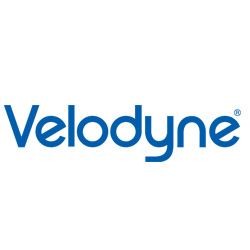Industry LiDAR, Acoustics Founded 1983 | Website www.velodynelidar.com Type of business Private | |
 | ||
Key people David Hall, CEO
Mike Jellen, President Products LiDAR, headphones, subwoofers Headquarters Morgan Hill, California, United States Profiles | ||
Velodyne lidar 3d mapping system for drones
Velodyne is the name of a trio of Silicon Valley-based technology companies focused on audio equipment (Velodyne Acoustics), LiDAR (Velodyne LiDAR), and marine solutions (Velodyne Marine). Velodyne LiDAR sensor hardware is used by Alphabet's self driving car division, Waymo.
Contents
- Velodyne lidar 3d mapping system for drones
- Commercial uav expo 2016 a closer look at velodyne lidar s puck lite
- Company History
- Audio
- LiDAR
- References
Commercial uav expo 2016 a closer look at velodyne lidar s puck lite
Company History
David Hall founded Velodyne in 1983 as an audio company specializing in low-frequency sound and subwoofer technology. In 2012, Velodyne added a line of headphones to their offerings.
Audio
David Hall founded Velodyne in 1983 as an audio company specializing in low-frequency sound and subwoofer technology. In 2012, Velodyne added a line of headphones to their product line, starting with the release of the vPulse in-ear headphones. Velodyne currently offers a number of audio products ranging from subwoofers to headphones.
LiDAR
Velodyne's experience with laser distance measurement started in the 2005 with the DARPA Grand Challenge sponsored by the Defense Advanced Research Projects Agency (DARPA). A race for autonomous vehicles across the Mojave desert, DARPA's goal was to stimulate autonomous vehicle technology development for both military and commercial applications. Velodyne founders David and Bruce Hall entered the competition as Team DAD (Digital Audio Drive), traveling 6.2 miles in the first event and 25 miles in the second. Team DAD developed technology for visualizing the environment, first using a dual video camera approach and later developing the laser-based system that laid the foundation for Velodyne's current LiDAR products.
The first Velodyne LiDAR scanner was about 30 inches in diameter and weighed close to 100 lbs. Choosing to commercialize the LiDAR scanner instead of competing in subsequent challenge events, Velodyne was able to dramatically reduce the sensor's size and weight while also improving performance. Velodyne's HDL-64E LiDAR sensor was the primary means of terrain map construction and obstacle detection for all the top DARPA Urban Challenge teams in 2007 and used by five out of six of the finishing teams, including the winning and second-place teams. Some teams relied exclusively on the LiDAR for the information about the environment used to navigate an autonomous vehicle through a simulated urban environment.
Since 2007, Velodyne LiDAR has focused on applications of LiDAR technology for use in autonomous vehicles, vehicle safety systems, 3D mobile mapping, 3D aerial mapping and security. The company evolved after founder-inventor David Hall competed in the 2004–05 DARPA Grand Challenge using stereovision technology. Since 2010, Alphabet has been testing self-driving cars on the streets in the Bay Area using Velodyne’s LiDAR technology. The first self-driving car prototype (build on Toyota's Prius model) used Velodyne's HDL-64E LIDAR sensor, costing $75,000. In 2012, Velodyne LiDAR signed a contract with Caterpillar for the supply of LiDARs to be used for off-road vehicles. In 2012 through 2015, Velodyne's spinning HDL-32E have been seen on mobile mapping vehicles by Nokia Here, Microsoft Bing Maps, Tencent, Baidu, TomTom and Apple's mapping vans. Leading mapping providers like Topcon and Leica Geo-systems have chosen Velodyne's scanners for their turnkey mobile solutions.
In 2015, Market research firm Frost & Sullivan honored the company and the VLP-16 with its 2015 North American Automotive ADAS (Advanced Driver Assistance System) Sensors Product Leadership Award. In 2016, Ford Motor Company announced that it will expand its fleet of self-driving R&D vehicles and use Velodyne LiDAR's next-generation Solid State Hybrid LiDAR Pucks with no moving parts at a cost of around $8000. In 2016, Velodyne's LiDAR department was spun off from Velodyne Acoustics as Velodyne LiDAR, Inc. On August 16, 2016, Velodyne announced a $150M investment from Ford and Baidu.
Velodyne LiDAR sensors are on display at the Smithsonian Institution in Washington, D.C. in the museum's permanent robotics collection.
